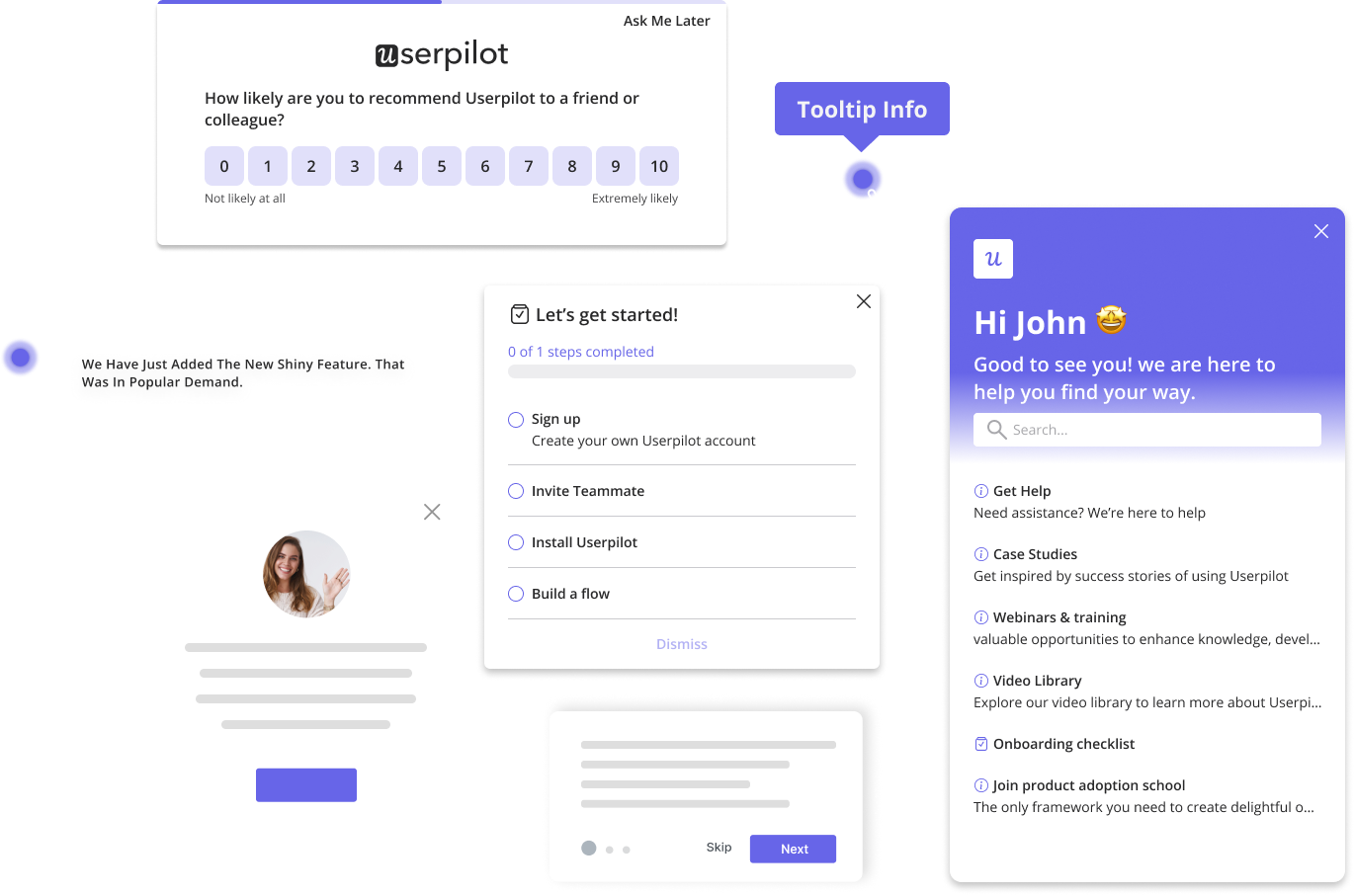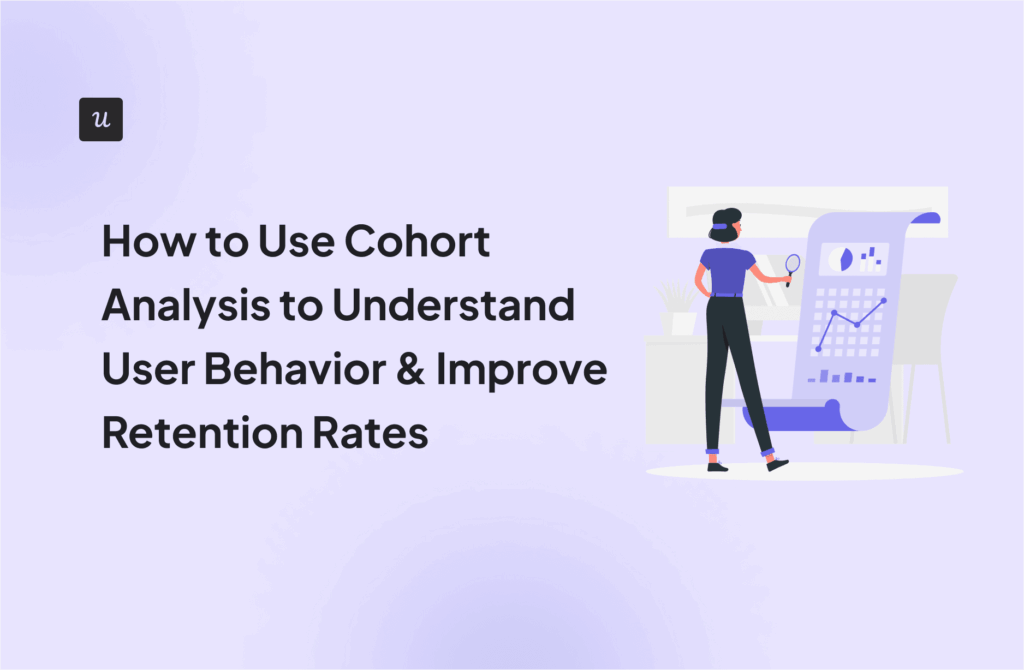
Amplitude is one of the market leaders for product analytics. So, if you’re serious about tightening up data collection and analysis for your app, no wonder you’re looking into it.
But if the Amplitude pricing page made your finger hover over that “Get started” button, I’m here to help you clear your doubts and make the right call.
In this article, I’ll break down Amplitude’s pricing model and key features. I’ll show you whether the price-to-offering ratio is the right fit for your use case, and show you some better alternatives in case it isn’t.
Try Userpilot Now
See Why 1,000+ Teams Choose Userpilot

What is Amplitude and why is it so popular?
Amplitude is a product analytics tool that helps you turn raw user behavior data into critical insights about your customers and products.
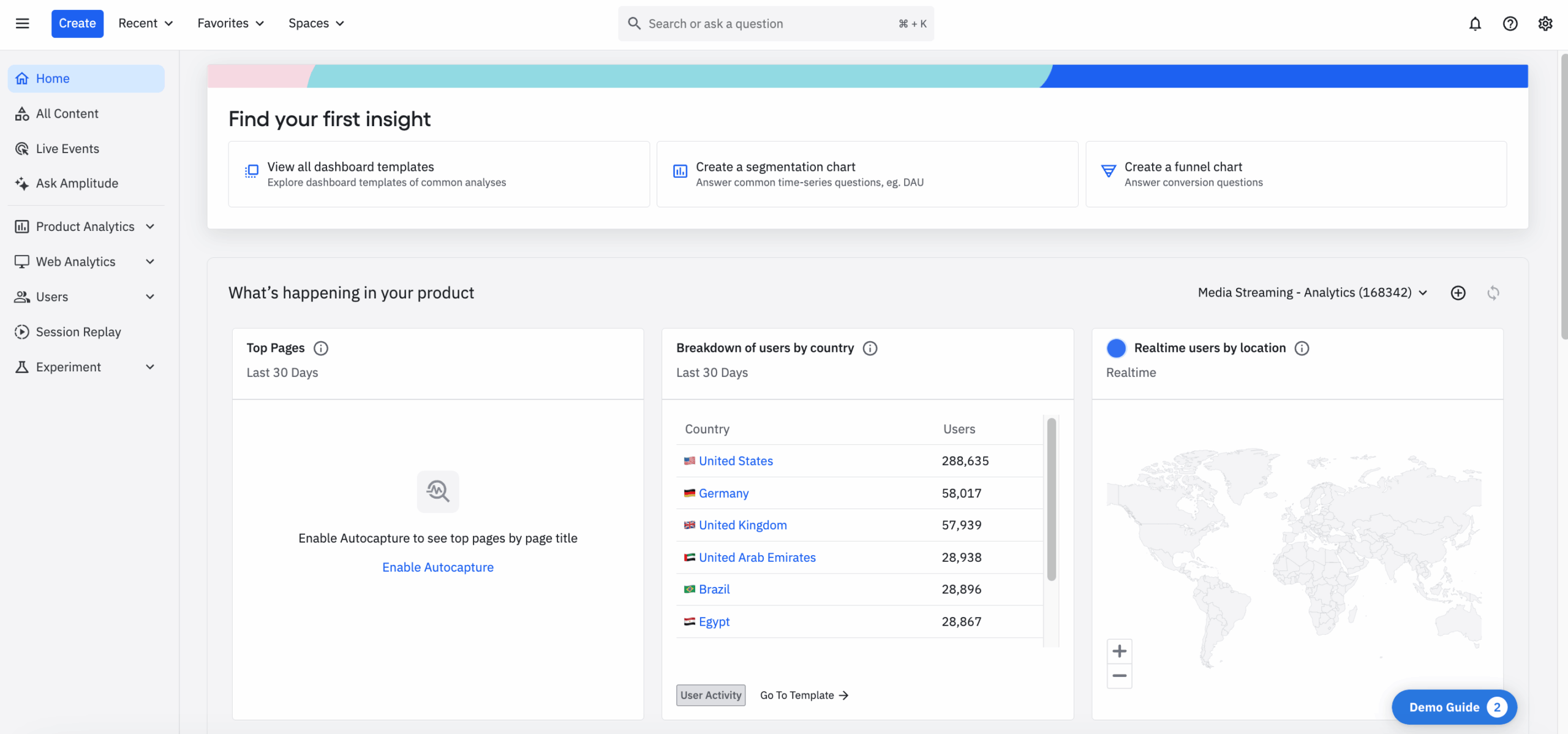
It offers a complete product data analytics suite, along with feature experimentation options and basic guides and surveys. It works for web and mobile apps, and lets you conveniently analyze data with its highly customizable dashboards.
While Amplitude should satisfy most data analysis needs, its in-app user engagement tools are limited. You can set up basic product tours, announcements, checklists, and microsurveys. However, if you’re after more robust user onboarding and interactive walkthrough options, you should probably look into Amplitude alternatives, like Userpilot.
What can you do with Amplitude? Key features
Amplitude offers a suite of features across product and marketing analytics, feature experimentation, feedback collection, web experimentation, and feature management. The goal is to understand user behavior, measure product usage, and optimize user experiences. Let’s take a closer look at some of the flagship features:
- User journey visualization: Helps you gain insight into user journeys, analyze customer experiences across multiple touchpoints, and track event sequences.
- Dynamic audience segmentation: Lets you segment customers and group users based on shared characteristics: behaviors, profiles, and product data.
- Event segmentation: Enables chart creation and user behavior analysis through custom events and properties with tracking and visualization.
- Retention analysis: Helps you perform retention analysis by comparing starting and return events and user actions.
- Session replays: Get in-depth qualitative insights by viewing session recordings of how your users behave in-app.
- A/B and multivariate testing: Conduct product experiments via A/B and multivariate testing to optimize the end-to-end user experience.
- Heatmaps: Visualize clicks, scrolls, and engagement hotspots on your website or web app.
How much does Amplitude cost? Amplitude pricing plan breakdown
I’ll walk you through each of Amplitude’s plans more granularly to show you what you can actually get for the price.
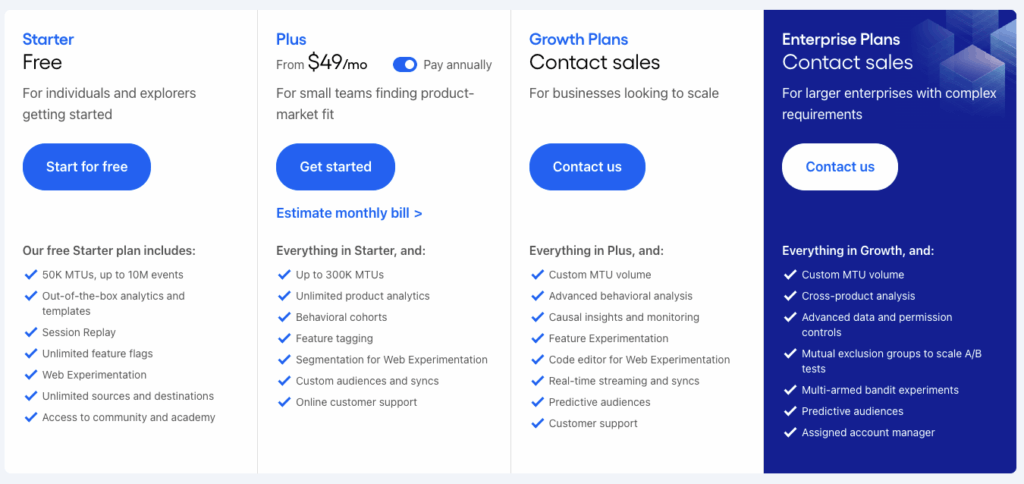
Amplitude Starter plan
Aplitude’s free Starter plan allows users to collect and analyze up to 50,000 Monthly Tracked Users (MTUs) with unlimited events. It includes the core analytics features such as user behavior tracking, cohort analysis, and retention analysis, and basic web experimentation features.
However, like any freemium product, the Amplitude Starter plan has many limitations. The most challenging ones are:
- Only one year of data retention,
- No access to guides and surveys,
- No customer support.
Bonus: Amplitude for Startups
Amplitude offers one more free plan option: you can apply to the Amplitude Startup Scholarship and receive one year of their paid Growth plan features for free.
You’ll be eligible for it if you have:
- Less than $10M in funding raised,
- Fewer than 20 employees.
It’s also available to US-based startups with a black co-founder, under $30 million in funding, and fewer than 150 employees.
Compared to alternatives like Pendo, Amplitude offers a compelling value proposition for early-stage startups.
Amplitude Plus plan
The Plus plan starts with $49 for 300,000 Monthly Tracked Users. It includes all features in the Starter plan with the following additions:
- Custom dashboards,
- Behavioral cohorts,
- Feature tagging,
- Segmentation for Web Experimentation,
- Custom audiences and syncs,
- Online customer support,
- Lifecycle management API,
- Limited guides and surveys.
However, here’s the twist: the price of the Plus plan grows with MTUs. Amplitude includes an interactive Plus Plan Pricing calculator on their website to help you estimate the costs.
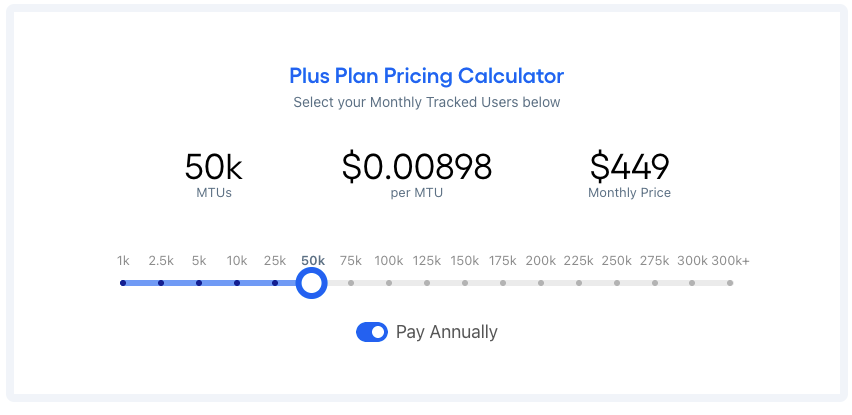
As with any pay-per-usage pricing plan, I don’t recommend it for rapidly scaling companies. Otherwise, a growing user base may unexpectedly blow up your monthly costs.
Amplitude Growth Plan
The Amplitude Growth plan pricing is on demand, and it has custom MTUs and unlimited events. Here’s what it adds to the Plus plan:
- Actionable analytics,
- Heatmaps,
- AI summaries,
- More guide and survey options,
- Unlimited behavioral cohort analysis and forecasting,
- Custom events and formulas,
- Single sign-on (SSO),
- Unlimited spaces for collaboration.
This set of features is more complete, but comes with a comparably high price and a steep learning curve to match.
Amplitude Enterprise plan
The Enterprise plan pricing is on demand, and the usage limits are custom. It’s best suited for large businesses with at least a million active users, and a budget and time to spare. Besides the Growth plan’s features, it provides you with the following:
- Data governance at scale,
- Advanced behavioral analysis,
- Advanced branching logic and personalization,
- Custom predictive audiences,
- Advanced permissions and password-protected links,
- Dedicated account manager and customer success.
What are the pros and cons of using Amplitude?
I’ll summarize the strengths and drawbacks of Amplitude to help you make an informed decision:
Pros:
- Offers a comprehensive analysis of user behavior.
- Provides real-time data to make data-driven decisions, with highly customizable dashboards.
- Can efficiently handle and analyze vast volumes of data from a large user base.
- Allows for advanced feature experimentation, some of it no-code.
Cons:
- It can be expensive for small and medium businesses as well as large businesses with huge tracked event needs and user bases.
- The wealth of features and customization options can be overwhelming to users with no prior experience with data analytics.
- It has a complex setup with a steep learning curve, especially on higher plans.
- Not enough support for analyzing user feedback or customer sentiment.
- No advanced in-app engagement features.
Amplitude reviews: What do users say about Amplitude’s pricing?
Users seem to have a generally positive experience with Amplitude, giving it a rating of 4.5 on G2. The reviewers appreciate the tool’s robust analytics capabilities, reporting, and ease of use.
However, some of Amplitude’s users struggle with the steep learning curve, complicated implementation, and limited customization. Complaints about Amplitude’s cost also echo in the reviews. The pricing model makes it difficult for users with smaller budgets to get started with the platform and to fully predict the growing usage costs.
According to one review,
“The pricing structure may be a bit steep for those on a tight budget, especially as the scale of data and usage increases.”
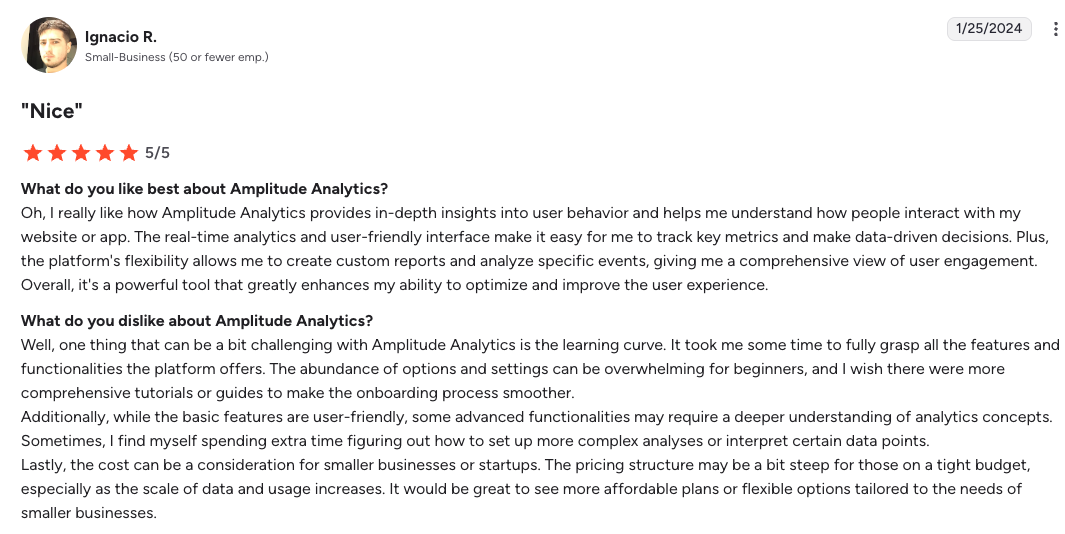
Other reviews, even from mid-market companies, mention issues with complex features that are difficult for team members with no analytical background, unclear pricing, and user permissions.
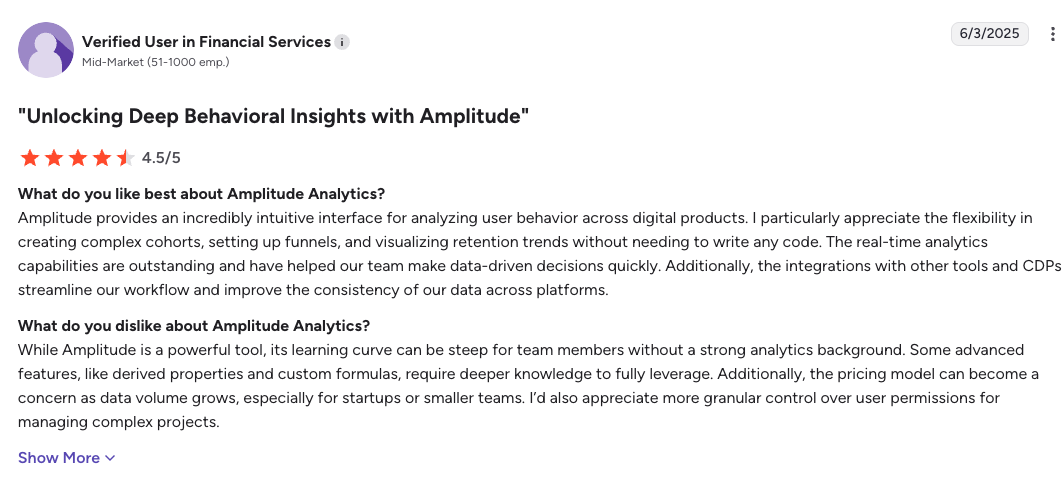
Overall, Amplitude seems to be a good choice for larger companies with dedicated data analytics teams. Small teams with tighter budgets looking for more of a self-serve model should probably choose one of the alternatives.
Amplitude alternatives: Are there better product analytics tools?
While Amplitude is a popular product analytics tool, you should look for an alternative if you want:
- More cost-effective solution with a more predictable pricing model, especially if you represent a small to medium-sized company.
- A less complex product analytics platform that can also be operated by non-technical teams.
- In-app engagement features like interactive user onboarding, feature walkthroughs, or product tools with the same tool that performs product analytics for you, for a complete product experience.
Here are two Amplitude alternatives to check out.
Userpilot: All-in-one product insights and engagement platform
Userpilot is a no-code in-app engagement and product data platform. Like Amplitude, it offers complex product analytics options, including custom reports (funnel, path, trend, and retention analysis) or session replays. With autocapture and no-code event tracking, it’s easy to use even by non-technical teams. You can also onboard and educate users with in-app guides. The end goal is to improve your user experience, increase activation rate, and retain more customers.
Some of Userpilot’s advanced analytics features include:
- Customer segmentation based on user/company data, customer feedback, content engagement, and more.
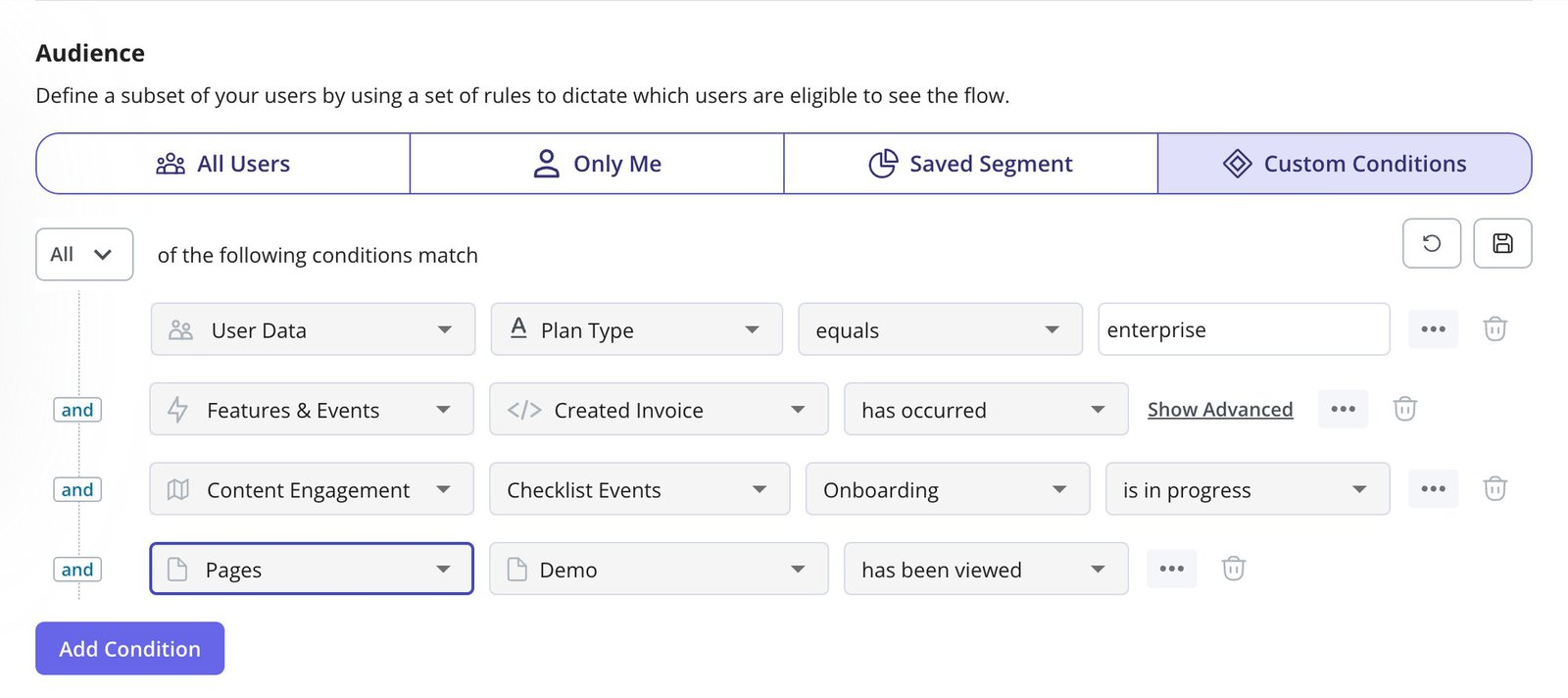
- Real-time product usage data monitoring.
- Funnel analysis to identify drop-offs and friction points in the user journey.
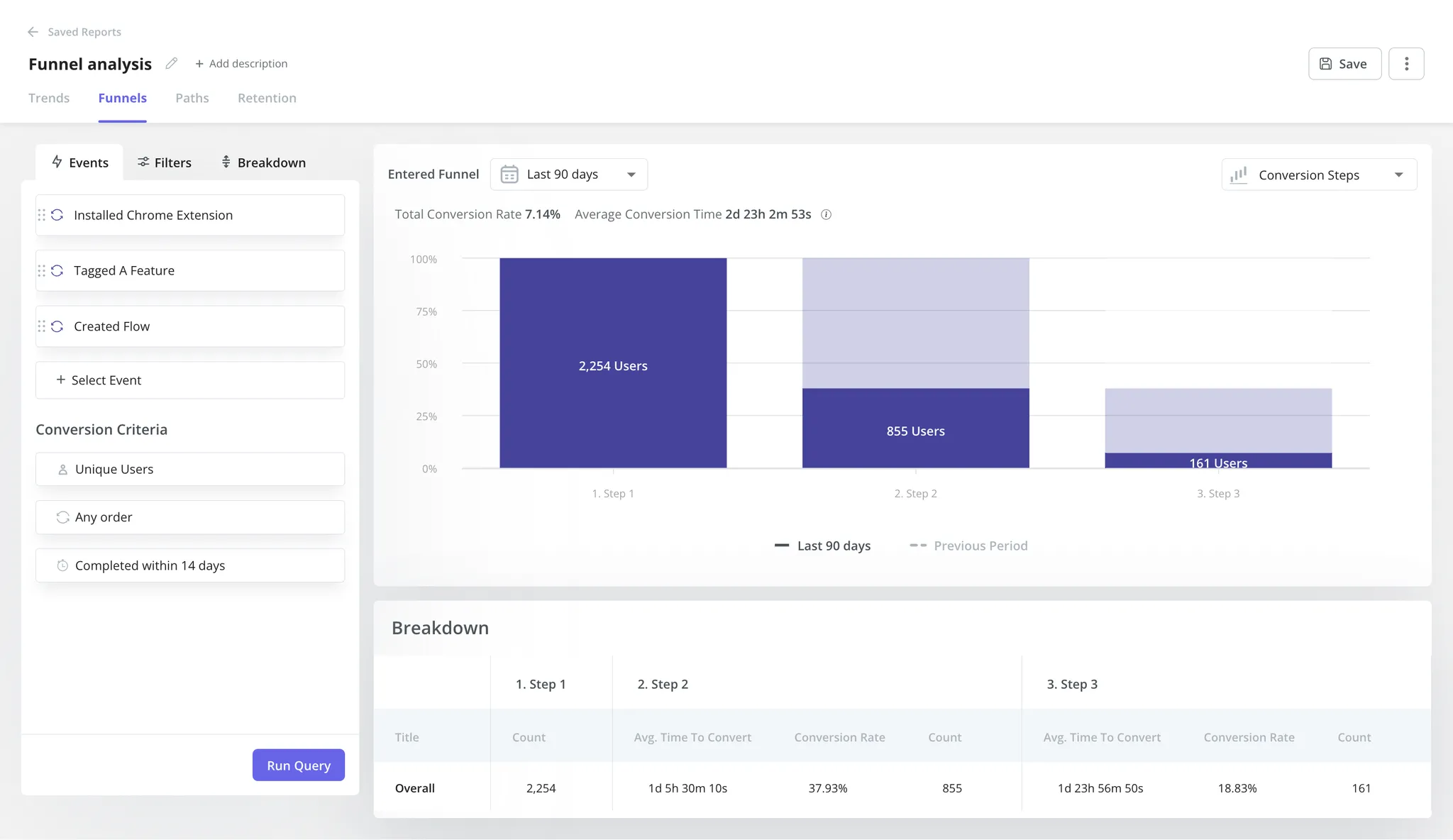
- Trend analysis for tracking how important metrics change over time.
- Path analysis to identify the happy paths.
- Cohort retention analysis to track retention rates and trends.
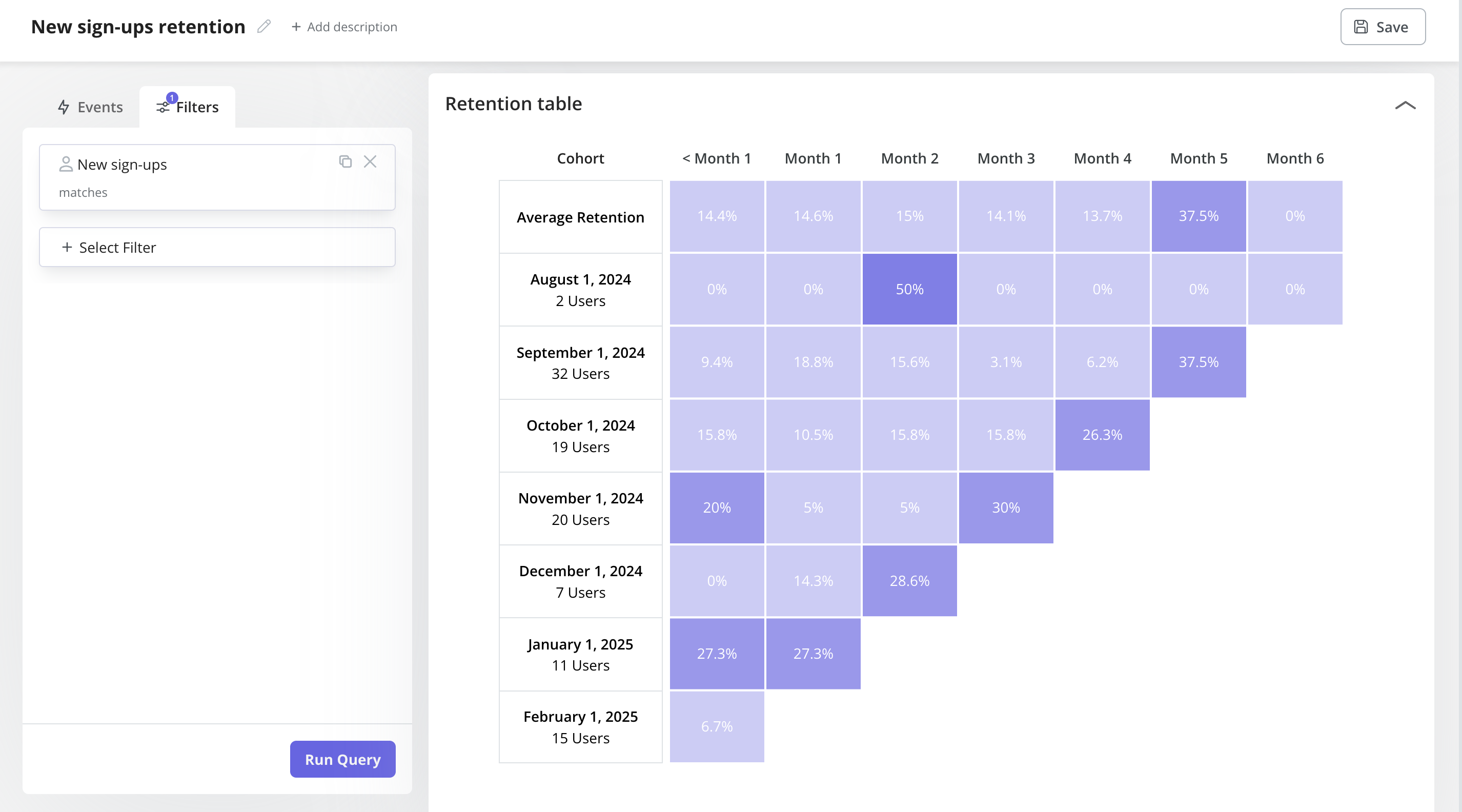
- Custom dashboards.
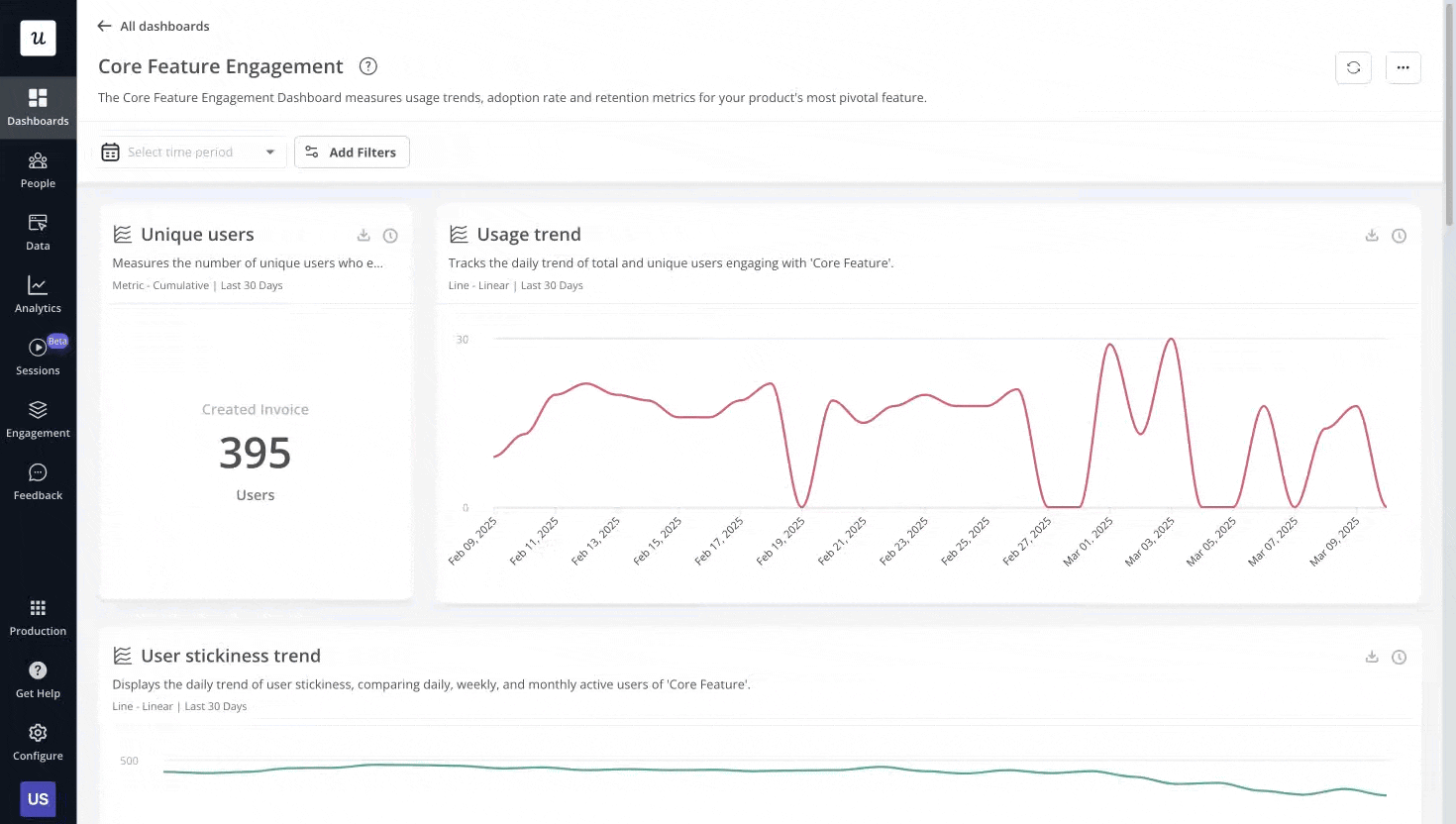
- Session replays with collaboration options.
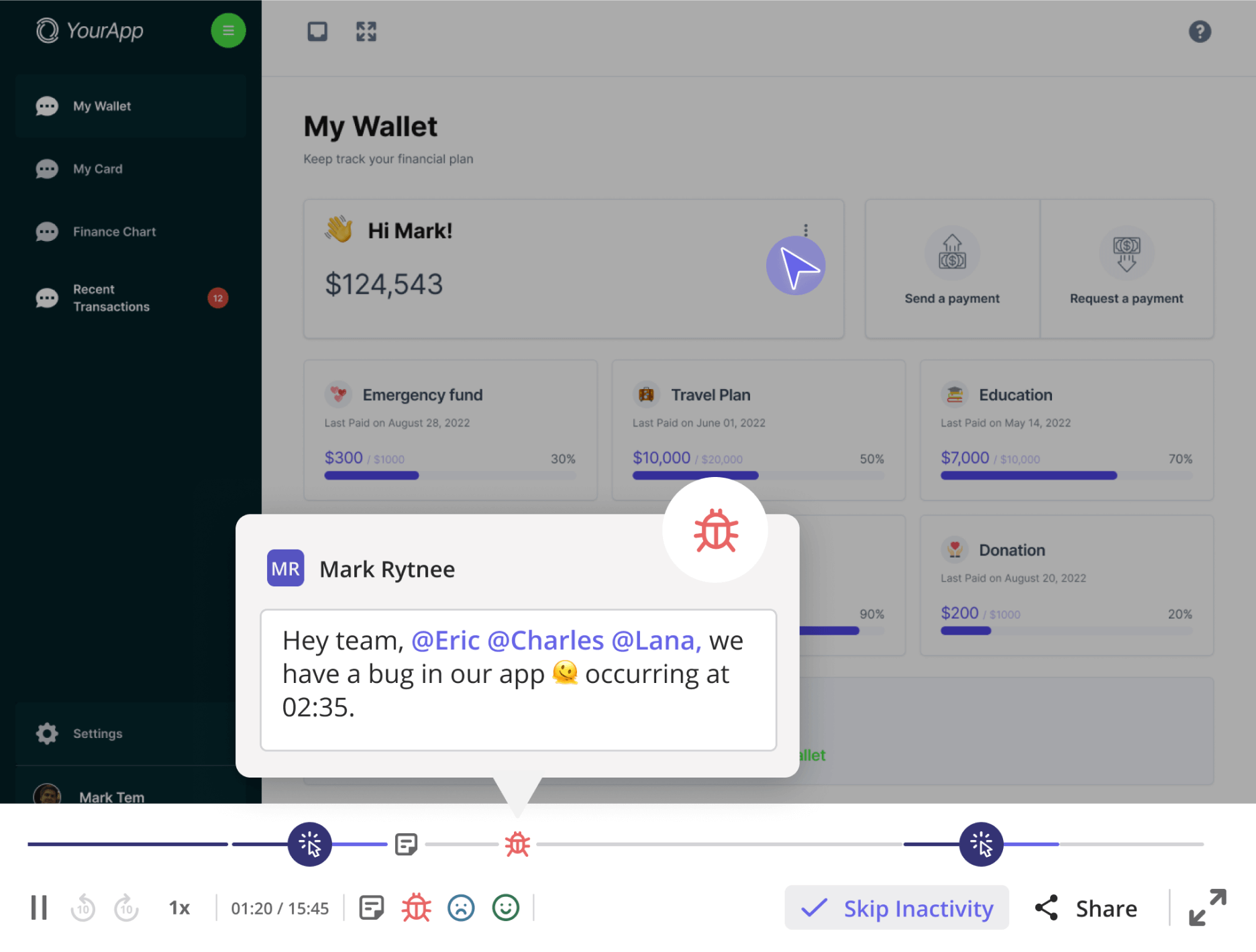
- Integrations with other analytics tools, like Mixpanel, Amplitude, Heap, etc.
Userpilot also offers additional features for engagement in web apps, mobile, and email. Here are some examples of what you can do:
- Build omnichannel onboarding experiences through in-app checklists and interactive walkthroughs, onboarding emails, or mobile carousels.
- Create an in-app resource hub with tools like live chat, video tutorials, knowledge hub, and documentation.
- Gather customer feedback through various microsurveys, like NPS, CSAT, and CES surveys.
Userpilot pricing vs Amplitude pricing
Userpilot’s transparent pricing ranges from $299/month on the entry-level end to an Enterprise tier for larger companies.
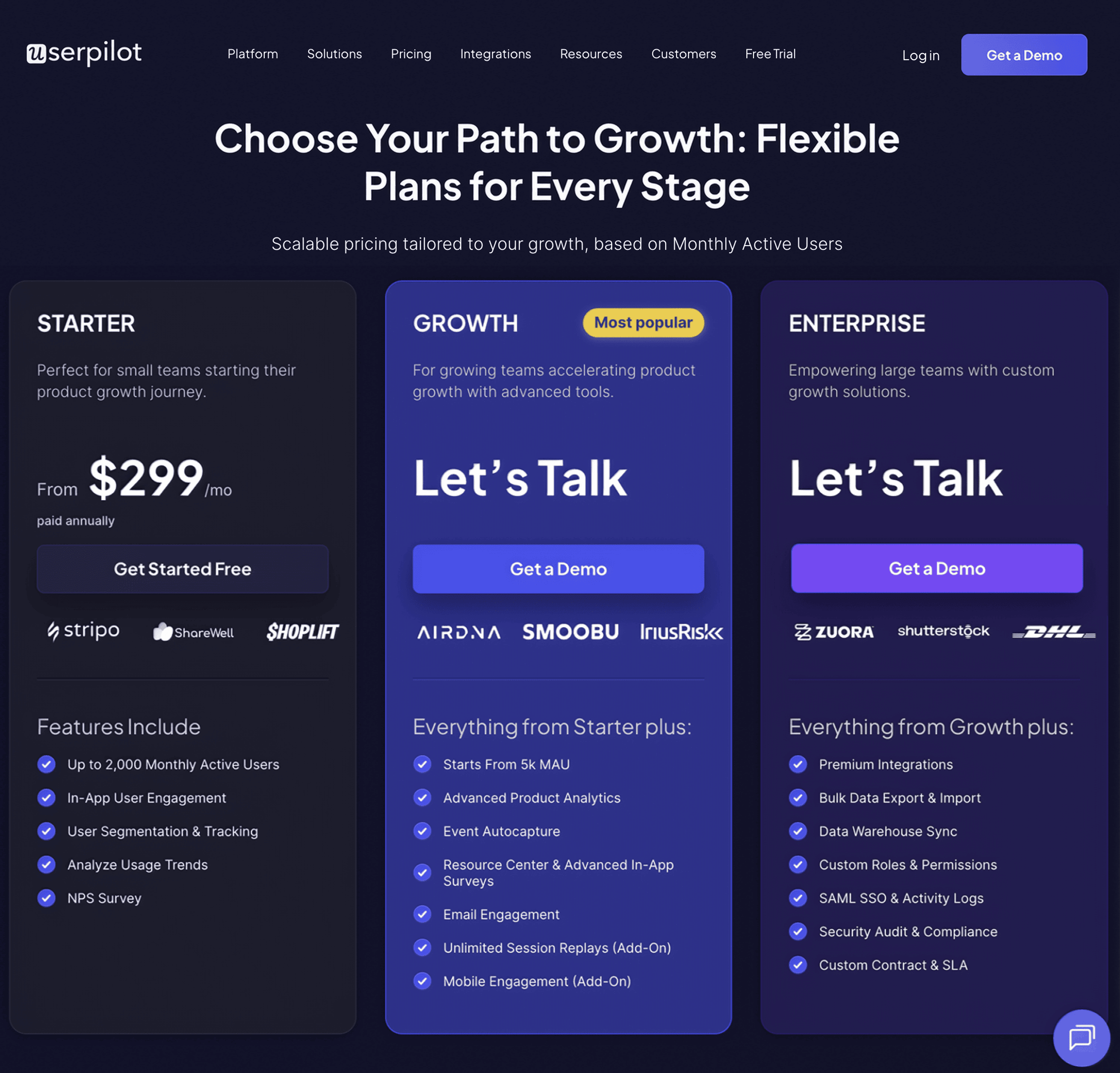
While there is no free option, Userpilot’s entry-level plan includes access to all UI patterns and all essential features that most mid-market SaaS businesses need to get started. While the prices of Growth and Active plans depend on the Monthly Active Users, they’re fixed, not usage-based.
Below is a breakdown of the pricing tiers you can choose from:
| Plan | Price | Key features |
| Starter | $299/month (billed annually) | Ideal for mid-market SaaS teams getting started:
|
| Growth | Custom | It’s the most popular choice for growing teams that need deeper insights. It offers everything in Starter, plus:
|
| Enterprise | Custom | The Enterprise plan offers custom pricing and includes everything in Growth, plus:
|
Not sure which plan is right for you? Book a demo to talk with the team and find the best fit for your needs.
Userpilot reviews
Userpilot enjoys a rating of 4.6 on G2. Its active users have appreciated its advanced analytics features, no-code in-app engagement options, and helpful customer support.

A Product Designer who uses both the in-app engagement and analytics options in Useripilot said:
Userpilot has been incredibly helpful in understanding how users interact with our site. The ability to collect in-app feedback and segment users based on behavior gives me clear, actionable insights to improve the user experience. (…) It’s helped validate design decisions and surface areas of friction we wouldn’t have found otherwise.
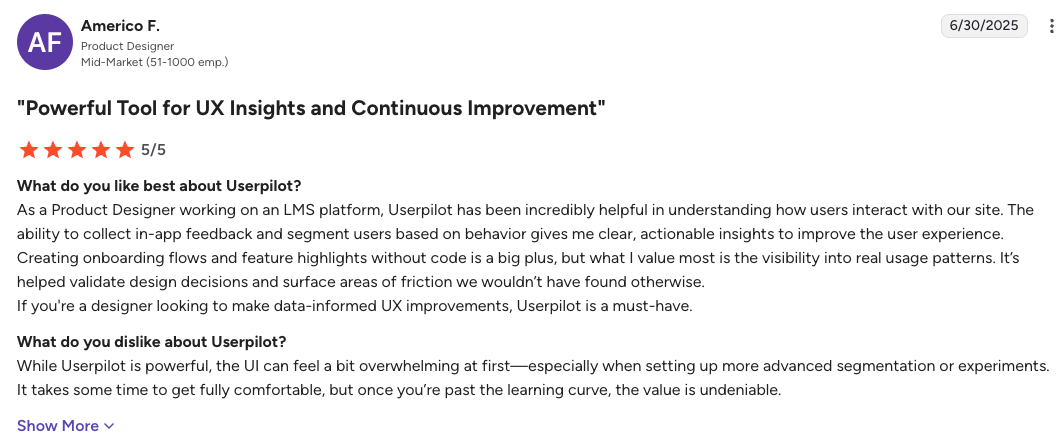
And as for the pricing? According to Amanda, a Senior Director of Product and Design:
Userpilot was a third of the price of Pendo, and we actually prefer the UX and overall experience. Highly recommend it to any product or growth team looking for a flexible, cost-effective solution to drive user engagement and onboarding.
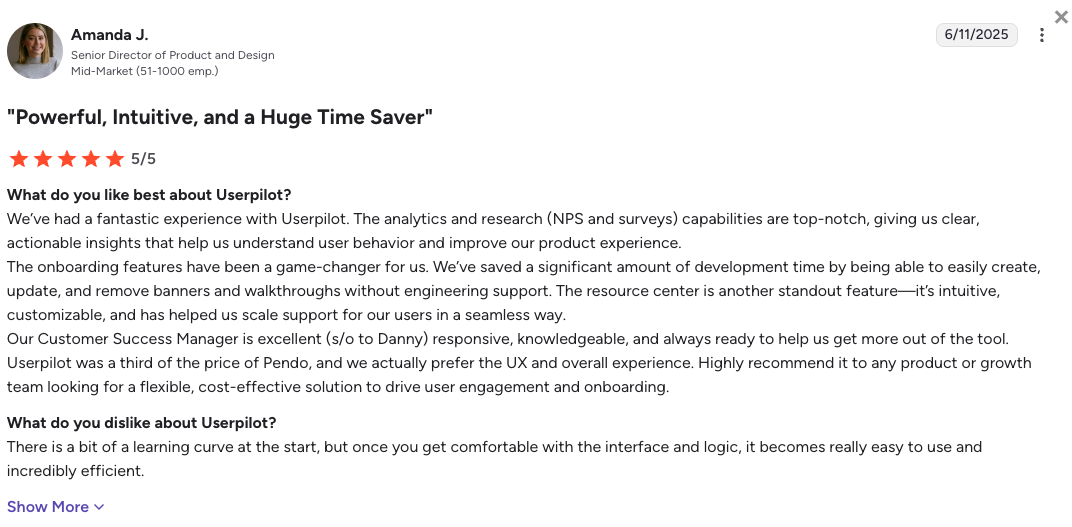
Mixpanel: Amplitude alternative for digital analytics
Another alternative, Mixpanel, is a powerful data analytics platform. It specializes in intuitive, accessible analytics dashboards, and its data warehouse connector allows for easily aggregating all product data.
Mixpanel’s feature sets include:
- Insights, funnels, retention, and flows reports,
- Custom events,
- Campaign reporting,
- Multi-touch attribution,
- Formulas and saved metrics,
- Behavioral cohorts,
- Session replays,
- Data warehouse connector: Self-serve access to product and backend data.
Mixpanel pricing vs Amplitude pricing
Mixpanel’s paid plans start from a more affordable pricing range than Amplitude.
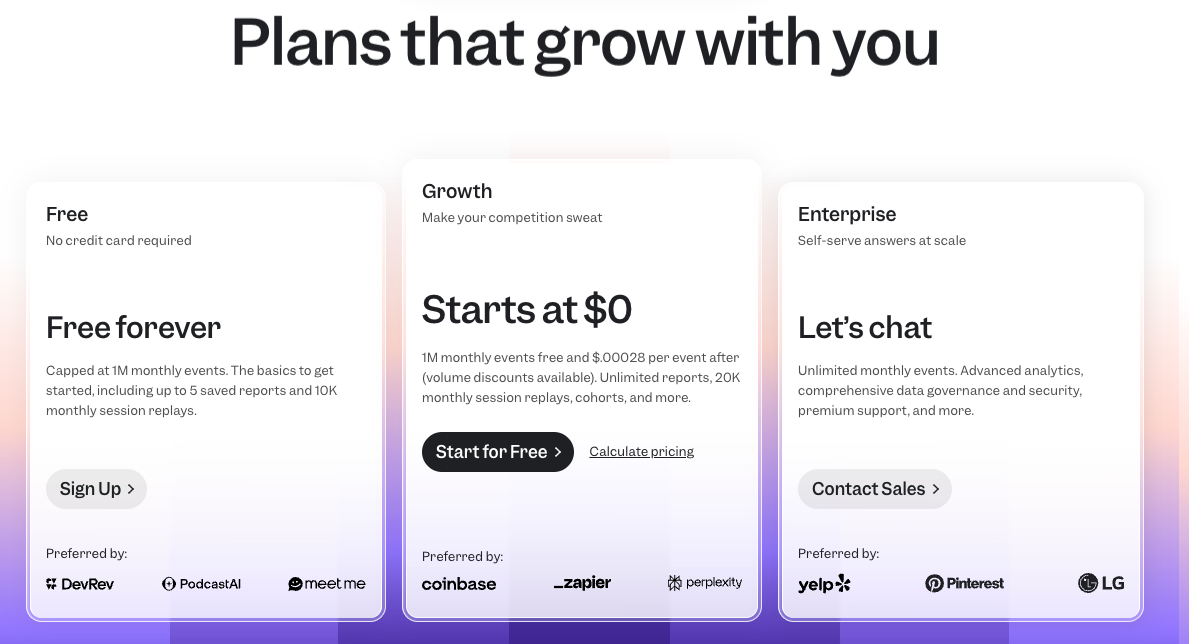
However, the exact price of the middle-tier Growth plan depends on the number of events.
Let’s sum up all Mixpanel’s plans:
| Plan | Price | Key features |
| Free | Free | Capped at 1M monthly events. Includes 5 saved reports and 10K monthly session replays. You can access:
|
| Growth | Starts at $0/month (1M monthly events free and $.00028 per event after) | Unlimited reports and 20K monthly session replays. It offers everything on the Free plan, plus:
|
| Enterprise | Custom | Unlimited reports and monthly events. It additionally offers:
|
Mixpanel also offers a special deal for Startups in which they can get the Growth plan for a year. To be eligible, the startup must have been founded less than five years ago and have received up to $8 million in funding.
Mixpanel reviews
Mixpanel’s users have rated the platform with an average of 4.6. They pointed out its intuitiveness, flexibility, advanced custom reports, and integrations as some fan-favorite strengths.
Some customers also mention a steep learning curve and data management issues. The pay-per-data pricing model may also be unscalable for small teams.
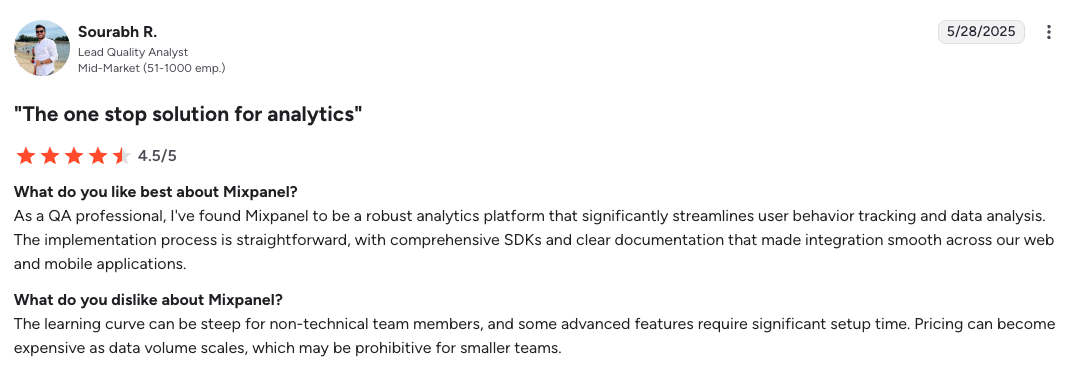
Another user noted that the recent changes in the free plan make it insufficient even for smaller teams, while the costs of the Growth subscription easily ramp up along with events:
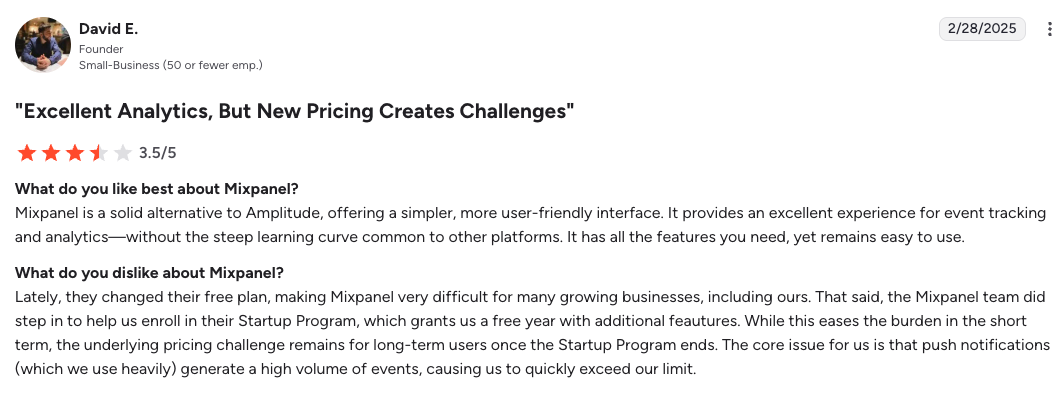
Conclusion
The Amplitude software is one of the best choices among product analytics tools. It boasts a market-leading number of advanced analytics options that satisfy even the most demanding data teams.
However, the Amplitude pricing structure tends to be confusing and easily grows when companies scale. That may make it inconvenient for smaller companies that can’t accurately assess their needs yet. The analytics also tends to get overcomplicated for non-technical users, and the in-app engagement options are less flexible than many of its more affordable alternatives.
For a data platform with more competitive pricing, you can consider Mixpanel, though it also has usage-based pricing, no in-app engagement options, and a less robust analytics suite. And if you’re after an all-in-one product platform with a fully no-code setup and transparent picking, I encourage you to try out Userpilot.
Want to see Userpilot’s advanced analytics features live? Book a demo call with our team and get started!

